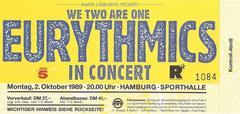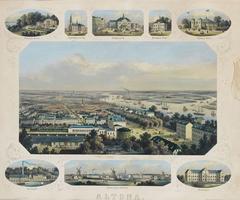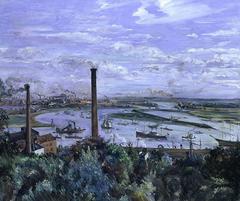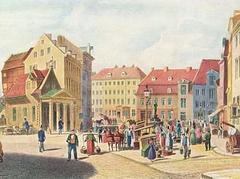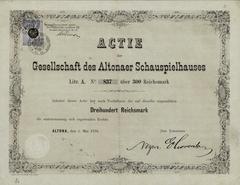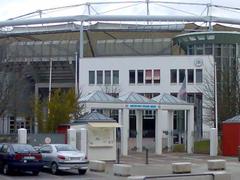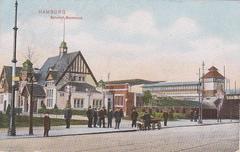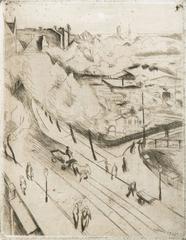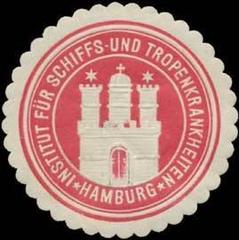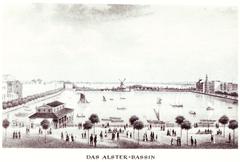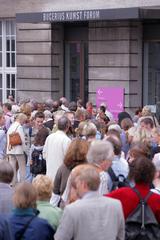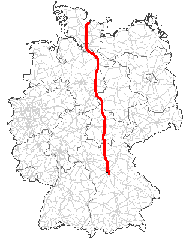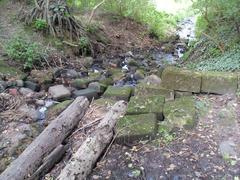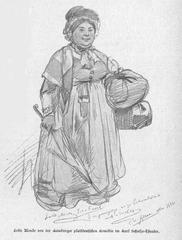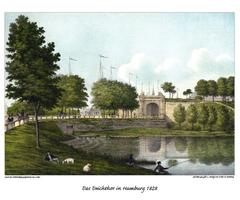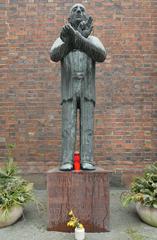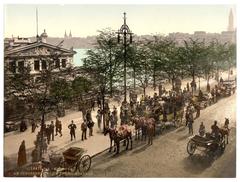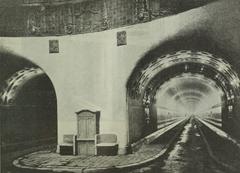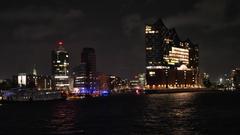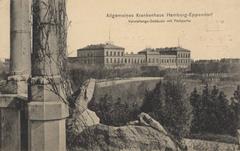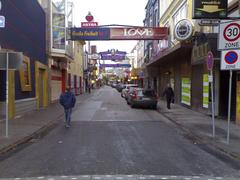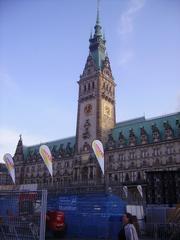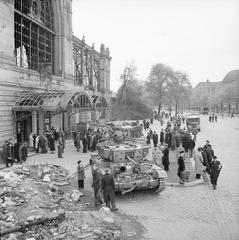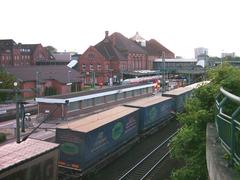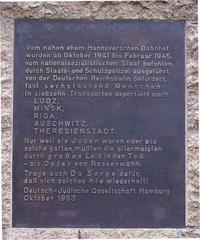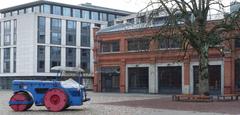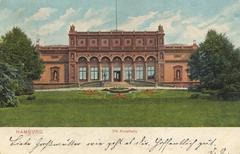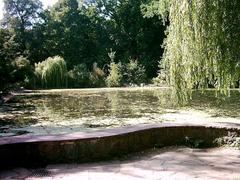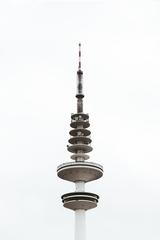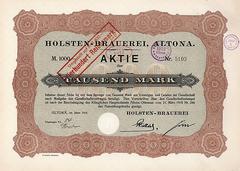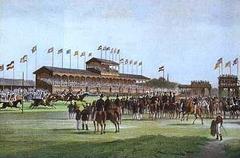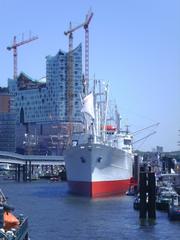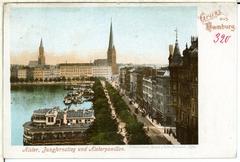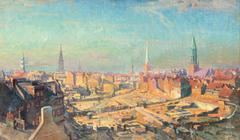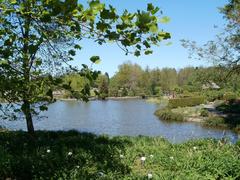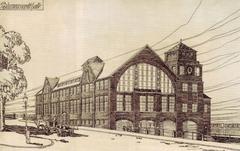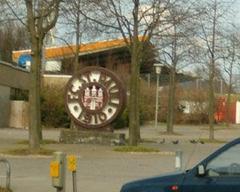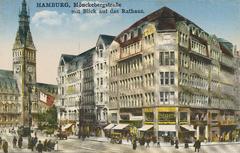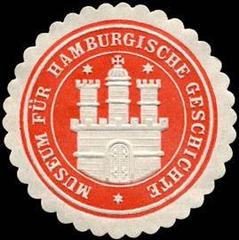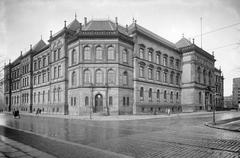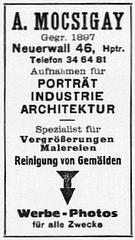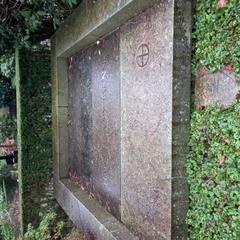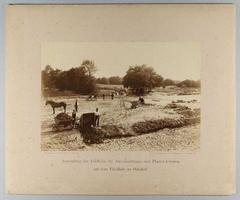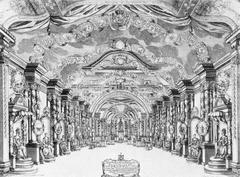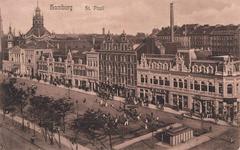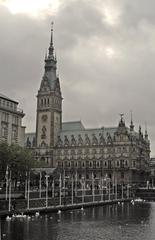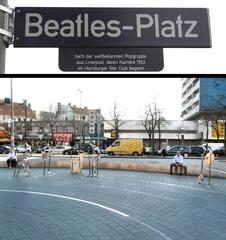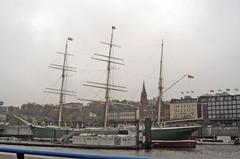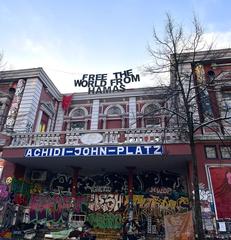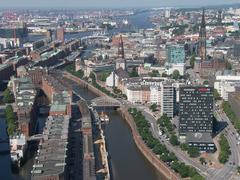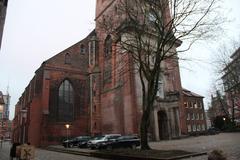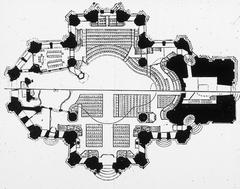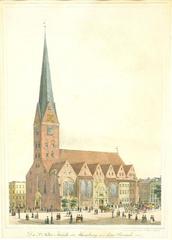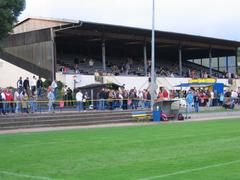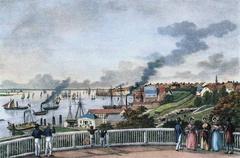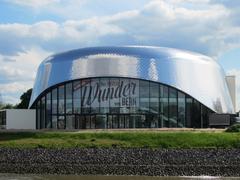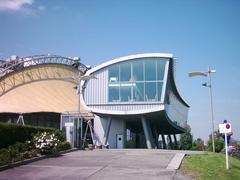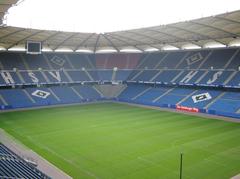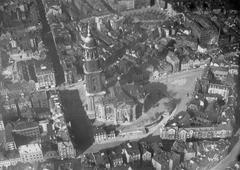
Dammtor Hamburg Visiting Hours, Tickets, and Historical Significance Guide
Date: 04/07/2025
Introduction to Dammtor Hamburg: History and Visitor Information
Located at the crossroads of Hamburg’s Old Town and New Town, Dammtor historically served as one of the city’s fortified medieval gates and today stands as a prime example of Hamburg’s evolution from Hanseatic stronghold to a modern metropolis. Originally integral to the city’s defensive network and its role in the Hanseatic League, Dammtor is now an architectural and transportation landmark, with the Art Nouveau Dammtor station—completed in 1903—symbolizing Hamburg’s embrace of modernity (Wikipedia; Rimpf; Hamburg Tourist Info). Today, Dammtor not only connects regional and long-distance rail services but also anchors a vibrant district adjacent to Planten un Blomen park, the Congress Center Hamburg, and the University of Hamburg. This guide provides a detailed look at Dammtor’s historical legacy, practical visitor information, ticketing, accessibility, and nearby attractions, ensuring you make the most of your visit to this dynamic urban gateway (Hamburg.com).
Contents
- Dammtor’s Origins and Medieval Role
- Architectural Transformation: From City Gate to Railway Hub
- Dammtor Station: Visiting Hours, Tickets, and Accessibility
- Dammtor’s Urban and Cultural Significance
- Events, Renewal, and Preservation
- FAQ: Visiting Dammtor
- Visuals and Media Resources
- Internal Links
- Call to Action
Dammtor’s Origins and Medieval Role
Dammtor’s history dates back to the medieval era, when it served as a fortified entrance controlling trade and passage between Hamburg’s Altstadt and Neustadt (Wikipedia). The “Dam Gate” was a critical point in the city’s defenses and a symbol of Hamburg’s autonomy within the Hanseatic League. Positioned between Rotherbaum and Neustadt, the gate facilitated the city’s growth, security, and economic expansion (Onestepguide).
Architectural Transformation: From City Gate to Railway Hub
The Medieval Gate Era
The original Dammtor was a robust stone structure, reflecting Hamburg’s strategic importance as a Hanseatic trading city. It also marked the transition between the compact Old Town and the newer, more expansive districts.
19th Century Modernization
By the 19th century, city fortifications were dismantled as Hamburg expanded. In 1866, the first Dammtor railway station opened near the original gate’s site, coinciding with the Hamburg-Altona railway’s introduction (Wikipedia). This shift from fortification to transportation reflected Hamburg’s emergence as a major European port and commercial hub.
The Art Nouveau Dammtor Station
The current Dammtor station, completed in 1903, is an Art Nouveau masterpiece featuring a striking glass façade and steel framework (Rimpf). Designed as a “Messebahnhof” (trade fair station), its location near the exhibition grounds and university underscores its continued importance in Hamburg’s urban life. The building is a protected monument and exemplifies early 20th-century architectural innovation (Hamburg Tourist Info).
Dammtor Station: Visiting Hours, Tickets, and Accessibility
Visiting Hours
- Station: Open daily, typically from 4:30/5:00 AM to 1:00 AM. Train services operate nearly around the clock.
- Shops & Services: Most open 6:00 AM–10:00 PM, though hours may vary.
Ticket Information
- Train Tickets: Purchase at ticket machines, counters, or online via Deutsche Bahn and HVV.
- Public Transport: The Hamburg Card offers unlimited travel on buses, S-Bahn, U-Bahn, and ferries, with added discounts at museums and restaurants.
Accessibility
Dammtor is fully accessible, with elevators, ramps, tactile guidance, accessible restrooms, and staff assistance available for travelers with disabilities (Bahnhof.de).
Facilities
- Luggage Storage: Lockers are available (€4–€8 per day).
- Amenities: Cafes, bakeries, shops, ATMs, and free Wi-Fi.
- Navigation: Clear signage in German and English.
Dammtor’s Urban and Cultural Significance
Urban Connectivity
Dammtor is a vital node in Hamburg’s public transport network, easily linking travelers to the city center, Alster Lake, Planten un Blomen park, and major event venues (Hamburg.com). Its strategic placement near the university, Congress Center Hamburg, and Messehallen (exhibition halls) attracts a diverse mix of commuters, students, tourists, and business travelers.
Architectural and Social Landmark
The station’s Art Nouveau architecture has made it a city icon, while the surrounding Rotherbaum district combines historic charm with modern vibrancy (Destination Abroad). Dammtor also serves as a commercial center, with a variety of shops, restaurants, and convenient services (Einkaufsbahnhof).
Green Spaces and Memorials
Planten un Blomen park, adjacent to Dammtor, is one of Hamburg’s premier green spaces, renowned for its botanical gardens and seasonal Water Light Concerts (Urtrips.com; Wasserlichtspiele Hamburg). The area also features memorials such as the 76er Memorial, honoring Hamburg’s complex history (Treasure Bunker).
Events, Urban Renewal, and Preservation
Dammtor’s central location makes it a hub for major trade fairs, conferences, and public gatherings at the Congress Center Hamburg and Messehallen (Wikipedia). The district’s ongoing urban renewal integrates green spaces like Moorweide with sustainable urban planning (World Cities Culture Forum). Renovations have preserved Dammtor’s Art Nouveau character while updating facilities for modern use (Rimpf).
Frequently Asked Questions (FAQ)
Q: What are Dammtor’s visiting hours?
A: The station is open from early morning (4:30/5:00 AM) to 1:00 AM daily. Shops typically operate 6:00 AM–10:00 PM.
Q: Do I need a ticket to enter Dammtor?
A: No ticket is required to enter the station, but a valid ticket is needed for train travel.
Q: Is Dammtor accessible for travelers with disabilities?
A: Yes, with elevators, ramps, tactile guidance, and accessible facilities.
Q: Are there guided tours?
A: Dammtor itself doesn’t offer tours, but local operators provide historical and architectural tours that include the station and nearby attractions.
Q: Where can I store luggage?
A: Lockers are available at the station.
Visuals and Media Resources
Alt: Dammtor Hamburg station with its iconic Art Nouveau glass facade. Alt: Entrance to Planten un Blomen botanical gardens adjacent to Dammtor.
Internal Links
Call to Action
Planning a trip to Hamburg? Download the Audiala app for guided tours, real-time transit updates, and insider tips. Follow us on social media for the latest Hamburg news, events, and travel inspiration. Explore more of our guides to discover all that Hamburg has to offer!
Summary and Recommendations
Dammtor is a living testament to Hamburg’s evolution—from a medieval gateway to a dynamic, accessible transport and cultural hub (Wikipedia; Hamburg Tourist Info). Its strategic location, rich history, and proximity to iconic parks, academic institutions, and event venues make it a must-visit for any traveler. Use Dammtor as your starting point to explore Hamburg’s multifaceted heritage, green spaces, and vibrant urban life. For the best experience, leverage digital tools like the Audiala app for seamless navigation, curated tours, and up-to-date visitor information (Rimpf; Hamburg.com).
Sources and Official Links
- Dammtor, Wikipedia
- Hamburg Historical and Cultural Overview, Onestepguide
- Messebahnhof Dammtor Hamburg, Rimpf
- Dammtor Station Hamburg, Wikipedia
- Hamburg Visitor Information, Hamburg.com
- Dammtor Station and Surroundings, Hamburgausflug.de
- Dammtor Station Historical and Visiting Guide, Hamburg Tourist Info
- Dammtor Station Facilities and Accessibility, Bahnhof.de
- Water Light Concerts at Planten un Blomen, Wasserlichtspiele Hamburg
- Hamburg Travel and Cultural Events, Hamburg Travel












